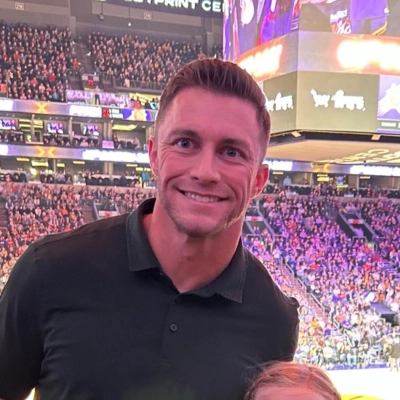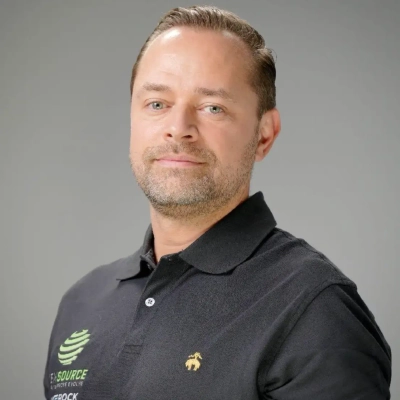Employee Recognition: 11 Tips for Engaging Senior Leadership
Employee recognition is a powerful tool for boosting morale and productivity in the workplace. This article presents expert insights on engaging senior leadership in recognition efforts. Learn practical strategies to enhance your company’s recognition program and create a more positive work environment.
- Link Recognition to Team Goals
- CEO Engagement Boosts Holiday Party Impact
- Personalize CEO-Delivered Quarterly Impact Awards
- Elevate Recognition Through Leadership Participation
- Transform Recognition into Strategic Discussions
- Showcase Specific Achievements During Team Meetings
- On-Site Leadership Recognition Drives Performance
- Personal Touch Amplifies Recognition’s Effectiveness
- Foster Growth Through Genuine Leadership Appreciation
- Connect Employee Actions to Company Mission
- Recognize Unseen Efforts That Prevent Errors
Link Recognition to Team Goals
I think employee recognition works best when it’s real and tied to actual impact.
One thing we did was involve senior leadership by linking recognition to our team goals. For example, one of our junior DevOps engineers improved our deployment pipeline. It cut down rollback issues by 40%. That’s a big deal for us because it meant fewer bugs in production and faster releases.
I highlighted this during our all-hands meeting and showed how it made a difference. Our CEO also gave the engineer a shoutout and mentioned how this helped us ship a major feature on time.
That kind of recognition, coming from both tech and business leaders really boosted morale. It also showed the team that good work doesn’t go unnoticed, no matter what level you’re at.
Now, our leadership team often checks in to see who’s doing great work so they can be part of the recognition too.
 Garrett Lehman
Garrett Lehman
Co-Founder, Gapp Group
CEO Engagement Boosts Holiday Party Impact
We have always had the Christmas holiday party, renting out a large private room at a banquet hall, but these were mostly passive events where people ate, got their presents, and then scurried off with full bellies.
Running a 13-site franchise makes it difficult to build a real cohesive team culture, especially considering the large distance between the centers. After some personal brainstorming, I approached the CEO and suggested adding a trivia component that encouraged employees to join pre-assigned teams made up of colleagues from different locations.
Not only was it fun, but people exchanged contacts and stayed in touch, looking forward to future events. The CEO went around laughing and asking people if they wanted drinks or anything, raising her hands and chasing the servers’ attention.
While we still do the annual awards dinner, this addition wouldn’t have been as effective without the CEO’s enthusiasm.
 Jeremy Golan SHRM-CP, CPHR, Bachelor of Management
Jeremy Golan SHRM-CP, CPHR, Bachelor of Management
HR Manager, Virtual HR Hub
Personalize CEO-Delivered Quarterly Impact Awards
We transformed our recognition program by having our CEO personally deliver quarterly ‘Impact Awards’ rather than delegating to HR. Instead of generic appreciation emails, we created a process where department heads nominate employees with specific stories about business impact, then the CEO spends 15 minutes with each winner discussing their contribution and career goals.
What made this successful was the preparation work. HR provides the CEO with talking points about each winner’s specific achievements, career aspirations, and recent projects. This allows for meaningful conversations rather than surface-level thank-yous. We also time these meetings strategically – the CEO blocks two hours quarterly just for recognition meetings.
The impact was immediate. Employee engagement scores increased 23% in six months, and voluntary turnover dropped significantly. More importantly, other leaders started modeling this behavior. VPs began doing monthly recognition rounds in their departments, and managers started asking for coaching on meaningful recognition techniques.
The key insight was making recognition a leadership development tool, not just an HR program. When senior leaders see recognition as part of their role in building talent and culture, it becomes sustainable and authentic rather than feeling like another required task.
 Brittney Simpson
Brittney Simpson
HR Consultant, Savvy HR Partner
Elevate Recognition Through Leadership Participation
When rewarding employees, it’s best to engage their managers to highlight the recognition. If the managers aren’t part of senior leadership, it’s important that those leaders participate in the company culture of recognition. Not all managers are experienced or invested in employee recognition, as some fail to recognize the function of the roles they manage. It sounds counterintuitive, but I’ve witnessed this on occasions in my personal collaborations. A manager’s blind spots, including a possible dismissive personality, can become a performing employee’s liability because their contribution value isn’t recognized by the appropriate recipients benefiting from their service.
This serves as an opportunity for seasoned employees and human resources to partner and elevate the employee’s recognition experience. The spotlight should be customized to reflect the employee’s efforts, noting their specific tasks/missions accomplished. These successful collaborations should be shared within a public company setting, whether it’s during an isolated ceremony, a working community lunch, a town hall, etc.
The greatest impact is acknowledging employee efforts and results in person, face to face, instead of passively posting acknowledgements in a text format (online, newsletter, or community board) which can be overlooked if people lack engagement on such communication channels. Engaging senior leadership is critical so they know who the key players are that enable them to succeed in their day-to-day business operations.
 Sasha Laghonh
Sasha Laghonh
Founder & Sr. Advisor to C-Suite & Entrepreneurs, Sasha Talks
Transform Recognition into Strategic Discussions
We make recognition visible at the top. Senior leaders join monthly reviews where standout work is highlighted in front of the team. In one case, a quick thank-you from our COO to a developer led to a company-wide discussion on improving release processes. Leadership’s presence transforms recognition into a signal of what truly matters.
 Hillel Zafir
Hillel Zafir
CEO, incentX
Showcase Specific Achievements During Team Meetings
One thing we started doing at my pest control company in Chandler was to involve myself in monthly shout-outs during our team breakfast. I realized early on that when senior leadership visibly recognizes field technicians, it carries more weight. One month, our technician Omar caught a termite infestation that the homeowner had missed in the inspection report. I pulled him aside, but instead of just giving a quiet thank-you, I made it part of our morning meeting and handed him a Visa gift card in front of the crew.
What happened next surprised me. Another technician followed up the next week with a suggestion for improving our attic inspection checklist—and mentioned how cool it was that Omar got recognized for going above and beyond. Since then, we’ve made sure leadership is involved not just in praise, but in naming what we’re praising—so it’s clear, specific, and something others can aim for. Recognition doesn’t mean much if it’s vague or tucked away in a Slack channel. You’ve got to say it out loud.
 Jonathan Anderson
Jonathan Anderson
Co-Founder, Green Home Pest Control
On-Site Leadership Recognition Drives Performance
At LightSpeed Electrical, recognition doesn’t come from a script or some HR memo—it comes from the top, directly and personally. I don’t believe in generic “employee of the month” posters. That’s not how you build loyalty in a trade like ours. Recognition has to be specific, timely, and real. And most importantly, it has to come from leadership.
As the owner and a working Level 2 Electrician myself, I’m on-site with the crew. I see who goes the extra mile, who steps up under pressure, and who makes the hard calls when things get messy—like dealing with a live service line fault in the rain. When someone nails a tough job, I make it a point to call it out in front of the team, right then and there. That moment matters.
One example: We had a night job where a client’s power was completely down—urgent Level 2 fault repair. One of our senior sparkies, Paul, took control of the situation, kept the junior techs calm, liaised with Ausgrid, and restored power under deadline. No excuses, just execution.
The next day, I called a toolbox meeting and put the spotlight on Paul—not just for what he did, but how he did it. No fluff. I laid it out clearly: leadership, problem-solving, safety compliance. The crew saw it. It wasn’t about boosting morale with fake praise. It was about reinforcing what right looks like.
That kind of recognition, directly from the top, sticks. It sets a standard. It creates a ripple. Everyone walks away knowing what gets noticed and valued. That’s how you lead a trade team. Recognition isn’t just patting backs. It’s about aligning behavior with business outcomes—and when leadership owns that process, people level up.
 Alex Schepis
Alex Schepis
Electrician / CEO, Lightspeed Electrical
Personal Touch Amplifies Recognition’s Effectiveness
I saw their hustle and knew it deserved more than just a thank you. So I called up Carla, our COO, and we headed out to meet them on site. We brought cold drinks, handwritten notes, and handed out bonuses based on direct feedback from clients. What stood out most was how personal it felt. One of our crew leads, Mark, told me later that his son had taped Carla’s note to their fridge. That’s when I realized how deep this kind of recognition can go.
When leadership gets involved directly, when we show up in person and speak from the heart, it makes a difference. We don’t just talk about appreciation in a company-wide email. We tie it to real actions and specific wins. Whether it’s someone who saved a client’s lawn from a fertilizer issue or stayed late to edge a tricky slope just right, we make sure the story gets told, and told by someone at the top.
Since we started doing this, we’ve seen a real shift. Turnover dropped. Crews started taking more ownership of their routes. And we got more five-star reviews where clients called out employees by name. At the end of the day, people want to know their work matters. When they hear that directly from leadership on their turf, in their element, it sticks.
 Francis Daniels
Francis Daniels
Founder & CEO | Turfpro, Turf Pro
Foster Growth Through Genuine Leadership Appreciation
Recognition should never feel like a task on a checklist. That is why I ask each leader to nominate one person every month who helped them grow personally and supported the company’s growth as well. This keeps appreciation genuine and not tied only to performance goals. Once, a senior manager recognized a junior analyst who challenged his ideas during a meeting. That moment sparked honest conversations and stronger teamwork.
I joined that discussion and publicly thanked both of them. It reminded everyone that we value bold thinking, no matter the job title. Leadership is not just about giving praise. It is about creating an environment where people want to give their best and feel confident that their efforts will not go unnoticed.
 Ender Korkmaz
Ender Korkmaz
CEO, Heat&Cool
Connect Employee Actions to Company Mission
I find that the most impactful recognition has nothing to do with formal programs or awards. It happens when a leader can connect an employee’s specific action directly to our mission. It’s easy to say ‘great job on the project.’ It’s much more powerful to say, ‘The way you analyzed that customer feedback and suggested that specific ingredient change will help thousands of families with sensitive skin.’ The first is a compliment. The second tells them their work is truly seen and understood.
For example, one of our junior marketers noticed a pattern in customer reviews about a specific frustration. Instead of just flagging it, she proposed a small change to our product description and a new FAQ. I brought her into our weekly product meeting to present her findings directly to me and our lead formulator. We implemented her change immediately. The recognition wasn’t a gift card. It was showing her that her insight was valuable enough to change how we operate and directly impact our customers.
 Nikki Kay Chase
Nikki Kay Chase
Owner, Era Organics
Recognize Unseen Efforts That Prevent Errors
Within our business, recognition is more impactful when it is accompanied by responsibility. It is the type of work where errors are quite expensive, and success may appear as if nothing went wrong. That is why I am always keen on pointing out the efforts people tend to miss.
The top management should not only acknowledge hard work to boost morale. It should support what the company must get right. When another person takes initiative and rectifies a process, maintains the accuracy of an audit, or averts a delay that never reaches the client, that is when I will step in personally.
For instance, we passed a major audit conducted on us some time back with no faults. I communicated to the team about the person who made that possible and their reasons. Not in broad terms, but in clear detail. Such demonstration of clarity from top management is how recognition is integrated into the culture rather than being a part of formalities.
 Gene Genin
Gene Genin
CEO, OEM Source
